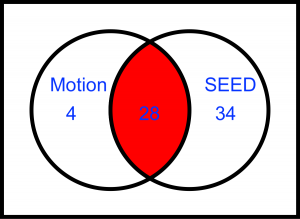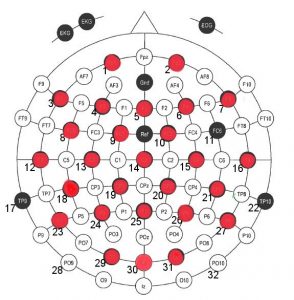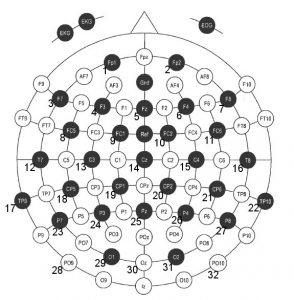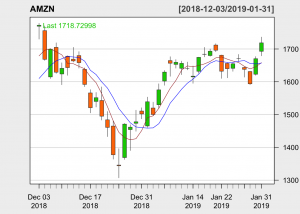Goal is to merge two datasets, Motion and SEED. due to different dimensions I have to drop 34 channels from SEED and use only 28 channels for input.
Power-Spectral Density Function

the EEG signals are a time series data stream, the above figure shows the power spectral density of the 28 channels, this function uses Fourier transform to convert time domain to frequency domain. This allows us to learn about relationships that are not sequential like the weather patterns but like population growth patterns (refer to the hare and lynx population problem).
28 EEG Sensor Placement

the sensor placement above shows the 28 channels that are present in both datasets.
There are 3 methods that seem feasible to go ahead with to achieve our goal of using EEG signals to send distress calls in need.
1. Separate Features -> Ensemble
This method is quite extensive to code, but the logic is simple and would most likely provide the best results.

we use a total of 56 features (EEG channels), 28 from the intersection and the other 28 being a weighted sample from the Motion and Seed sets. To train several CNN models for every combination of 56 features.
The weights would be calculated using gradients, similar groups of EEG would be selected based on gradients. this would help us identify nodes that have similar patterns with a given motion and emotion.
In the end we would have an ensemble layer, that compiles the best performers of all the networks trained, from this layer we would be able to identify the important electrode nodes to use to send distress signals.
2. Downsample
Is our Minimum Viable Product, this is the easiest model to implement, as we restrict our dataset to 28 channels for input and then to overcome different dimensions of the arrays we vary the batch size accordingly for a larger sample we would use smaller batch size and vice versa.
There are various optimization techniques we can implement in this method. such as:
- alternating strides and padding to improve training.
- Spatial Decomposition Analysis
- Time Series Techniques such as LSTM, (which is essentially telling our network layers to retain information about t-1, while optimizing the loss function at t)
- Attention factors ( allow the network to decide and accordingly assign weights to nodes that are not false/noisy)
3. NeuroPsychology
this method is likely to be the golden solution with far greater challenges on its path. It requires extensive knowledge of neuroscience to engineer features that show causal effects rather than correlated features.
For instance there must be some channels that provide signals for Flight/Fight response in human beings, we would pool such nodes or use a linear combination of them to effectively obtain signals to such responses. This would reduce our false positives and improve our ability to save a human life.
Reference
As I dwell further in modeling, I often look back and try to understand the data as much as I can. I don’t have any experience in neuroscience, but I do have extensive skills and tools in Causal Inference, Machine Learning and Time Series Analysis.
I found the paper on learning CNN features from DE features for emotion recognition quite useful and do plan to apply similar feature engineering techniques in the motion dataset, to see if I achieve better results for a shorter run time.
Continue reading “FIRST E.A.D: Proposed Methods and Challenges”








